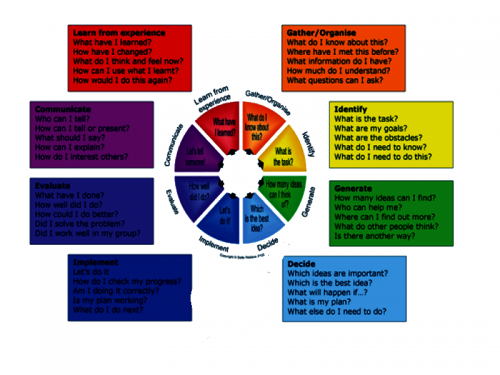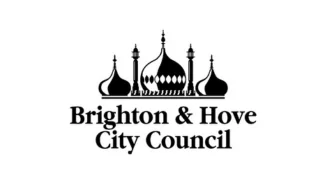Learning and Teaching
Learning
Learning comes before teaching at St. Luke’s! Unless we know what good learning looks like, how can we teach? Teaching at St. Luke’s enables children to develop as collaborative and independent learners. Through teaching within a learning community, where the teacher and children share joint responsibility for their own and everyone else’s progress, the children learn how to learn well from each other and independently, how to set appropriate targets, how to review them and how to challenge themselves further. Teaching focuses on children becoming effective learners. Therefore, no matter what the curriculum content, skills or concepts our children are faced with, they make good progress.
Learning Community Principles
· Child agency is central to the maintenance and enrichment of the learning culture
· Children understand the community ethos and interdependence in learning
· Learning/knowledge and skills building is primarily a social experience/collective endeavour with some opportunities for individual experience
· Children understand their role and responsibility in the community knowledge and skills generation
· Regular opportunities are offered for horizontal communication – knowledge sharing and challenge
· Dialogic teaching and learning promotes deeper understanding
· Learning is not competitive but mutually supportive and enhancing
· A learning community is one in which everyone has responsibility for their own and other pupils’ learning and for the governance of the classroom
· Strong learning and teaching metacognition support a self-improving system – individually and collectively
· Enquiry based learning is the core curriculum approach
· The teacher is a facilitator of learning and knowledge expert – knows the learning outcome and the skills needed but does not define the route
· The children know for themselves how well they are doing and what they need to do to improve
· Tailored skills teaching and learning enables children to develop at their own rate
· Self-directed learning is the ideal
· Audience and purpose is strong. The product is often collaboratively created
· Time is used flexibly to promote deeper and more sustained learning
· Regular peer evaluation and feedback is the driver and regulator within this system
· Peer teaching and co-learning are a core approach for enrichment and mastery
· Supportive, caring, critical but respectful relationships form the golden thread which run through learning activities
· Children regularly review how well the community supports learning and relation
Effective learners at St. Luke’s take a lead in their learning and take risks. They aren’t afraid to get things wrong. In fact they recognise this to be an important part of learning new skills and knowledge. They always put themselves in the challenge (Amber) zone. They are open minded about what they might learn, what they might enjoy and what they might be good at. They learn to teach each other and learn that through teaching they become a better learner. They review their learning regularly and set new targets as individuals and as a community.
By the end of year 6, we aim, through out approaches to teaching and learning, for our children to be:
- Team workers
- Effective participators
- Independent Enquirers
- Creative Thinkers
- Reflective Learners
- Self-Managers

The Learning Cycle which runs through many of their experiences

Why children’s dialogue and the development of dialogical skills are central to our teaching and learning
Dialogue and social success
We are preparing our children for an uncertain world. They will face a range of problems in an unpredictable future. Whatever the problems, they will need the skills and ability to work with others to find solutions. The ability to relate to others and to engage in creative dialogue will be a key to the future success of our children in both their public and private lives.
Dialogue and intelligence
Research has shown that a number of dialogic approaches can help raise levels of intelligence in children. This evidence is particularly strong in relation to cognitive acceleration programmes, philosophy for children and assessment for learning. These approaches share a number of similar features, including classroom dialogue, open-ended collaborative learning activities and self-assessment. Making thinking and learning more ‘visible’ through dialogue in classrooms is crucial to developing intelligence and learning for understanding.
Dialogue and creativity
The mind’s power of invention enables us to create new ideas about the world. Thinking becomes creative through the use of imagination. But imagination can lie dormant unless engaged, expressed and practised through creative thought, talk and activity.
Dialogue and well-being
Dialogue contributes to human well-being. In an increasingly complex world children are subjected to many of the same stresses and strains as adults. They are bombarded by an information overload of words and images, surrounded by demanding and persuasive voices telling them what to think, value and buy. Many children find it hard to articulate their problems. Dialogue provides an opportunity for children to connect to others, to express feeling and emotion, to communicate needs and to answer worries. Dialogue is the primary therapeutic tool in helping people to develop positive relationships with themselves and with others.
Dialogue and success in work
Contemporary work and culture will present children with a range of dialogic demands. This can be illustrated by the sorts of skills employers are looking for. In one survey about 25 per cent of employers reported skill shortages in: communication, customer handling, team-working, problem-solving. (National Skills Task Force Research Report, 2000) The ability to communicate, relate to, work and solve problems with others are essential if children are to maximise success in the workplace.
Dialogue and problem-solving
Classroom research shows that some groups solve problems better than others. In problem-solving tasks, groups that succeed best tend to: listen to each other be able to ask for help be willing to change their ideas. Successful groups are more dialogic.
Dialogue and democracy
Dialogue is a crucial element in educating for democracy. Children are flooded with written and visual information. They need to be given a voice; a voice to question, to challenge, to construct and deconstruct the meanings around them. They need to exercise choice in making decisions that fulfil their needs. A dialogue that is genuinely interactive is an exercise in democratic citizenship. If a dialogue is to model democratic processes then what children say and think is as important as what teachers, parents or carers say.
Therefore, it is a moral and social obligation that we extend the current levels of children’s thinking to develop dialogue that challenges, surprises and awakens new ideas. We need to help children practise being creative through dialogue, to think for themselves, to develop the capacity to talk intelligently with others and to use dialogue to aid learning. Given the challenges children face today and the problems they will have to face in the future there can be no more important task for teachers than to improve children’s capacity both to think for themselves and to benefit from the thinking of others by means of dialogue.
This moral obligation is further reinforced by the urgent need to address social inequality in our society.
• Low income children lag their high income counterparts at school entry by sixteen months in vocabulary. The gap in language is very much larger than gaps in other cognitive skills (Waldfogel and Washbrook, 2010).
• More than half of children starting nursery school in socially disadvantaged areas of England have delayed language – while their general cognitive abilities are in the average range for their age, their language skills are well behind (Locke et al, 2002)
• A survey of two hundred young people in an inner city secondary school found that 75% of them had speech, language and communication problems that hampered relationships, behaviour and learning (Sage, 1998)
• Vocabulary at age 5 has been found to be the best predictor (from a range of measures at age 5 and 10) of whether children who experienced social deprivation in childhood were able to ‘buck the trend’ and escape poverty in later adult life (Blanden, 2006).
• Researchers have found that, after controlling for a range of other factors that might have played a part (mother’s educational level, overcrowding, low birth weight, parent a poor reader, etc), children who had normal non-verbal skills but a poor vocabulary at age 5 were at age 34 one and a half times more likely to be poor readers or have mental health problems and more than twice as likely to be unemployed as children who had normally developing language at age 5 (Law et al., 2010). 4




